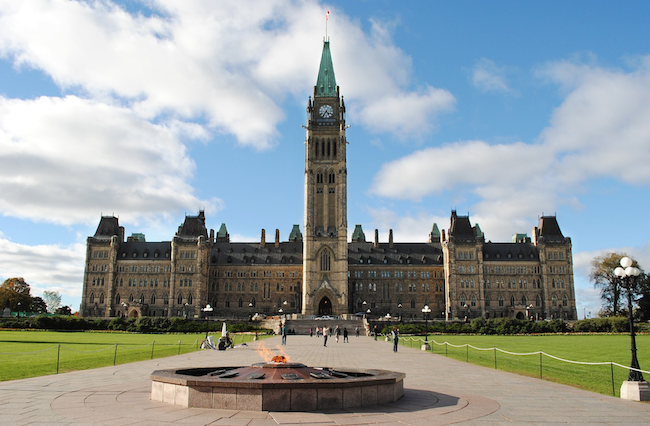In federal systems like Canada’s – where power, authority, and responsibility are divided and/or shared between multiple orders of government – it is typical for there to be an institution that represents the regions, states, or provinces within the national political infrastructure. Ronald Watts and Donald Smiley, eminent political scientists and scholars of federalism in Canada, called this intrastate federalism.
This concept acknowledges that provincial, state, and territorial governments are not the only legitimate voices for a country’s regions: federal politicians have something to contribute to the discussion too (Lusztig 1989). Intrastate federalism provides an alternative – hopefully a complementary, but at least a simultaneous one – to interstate federalism, which describes the negotiations between national and subnational governments (more on this later).
Ostensibly, the mechanism for intrastate federalism in Canada is the Senate. This chamber is most often described as one of “sober second thought,” which suggests that it was not meant to be a source of policy in its own right but instead a reviewer of proposed legislation sent over from the elected House of Commons. Sir John A. Macdonald, who is largely responsible for Canada’s constitutional design, made no secret of his distrust for and lack of confidence in elected politicians. He trusted the unelected Senate to provide a voice of reason and to represent the needs and interests of Canada’s regions in the national legislative process. In light of this consideration, the Senate’s membership was divided among four regions with 24 seats each, plus one seat for each territory. In 1949, the addition of Newfoundland and Labrador came with an added six Senate seats for the new province, which means that the four most eastern provinces – commonly referred to as Atlantic Canada – collectively hold 30 seats in the Senate as opposed to 24.
Despite the sentiments of Canada’s first prime minister, the Senate has always struggled for legitimacy in the eyes of Canadians. This is largely due to the fact that appointments have been made primarily on the basis of political affiliation. In today’s world, it is difficult to justify why a prime minister should be able to appoint his friends and supporters to roles that come with prestige, job security until age 75, a sizeable salary, and a lifelong pension (provided the Senator has served for at least six years).
Prime Minister Trudeau has introduced changes that emphasize non-partisan criteria in the appointment process. The government has established an Independent Advisory Board for Senate Appointments that provide recommendations to the prime minister for filling Senate vacancies. Canadians apply to become Senators and are advised that criteria including knowledge, experience, service, integrity, and representation will be given consideration, as opposed to partisanship. It is too early to tell whether the emphasis on non-partisan criteria will turn Senators – still unelected and unaccountable – into legitimate policy actors in the eyes of Canadians.
Some Senators have championed the idea of regional caucuses in the Senate, which would be a logical approach in light of their regional representation mandate. This idea has never really taken hold; instead, the Senate is currently populated by three caucuses: the Senate Liberals, the Conservatives, and the Independent Senators Group which, at 54 members, is the largest by far. There are also ten unaffiliated members.
To the extent that Senators are constrained by their perceived lack of legitimacy, it is more difficult for them to fulfill their role as regional voices – no matter how they caucus. Given the lack of active and pronounced intrastate federalism, there is more space to fill for interstate federalism. Negotiations between national and sub-national governments happen all the time and through different actors and access points, including both politicians and public servants. The most visual and high profile of these interactions is the First Ministers’ Meeting (FMM).
The FMM that took place in early December reminded us just how much political landscapes have changed since the federal Liberal government was elected. At the end of 2015, seven of ten provinces were governed by Liberals, and Rachel Notley, though with NDP, was an ally. Now, four of those governments have changed hands, and there is far less synergy between Premier Notley and the Prime Minister. Provincial partnerships will become more difficult; it could be that the need for a stronger intrastate federalism will prove apparent.

